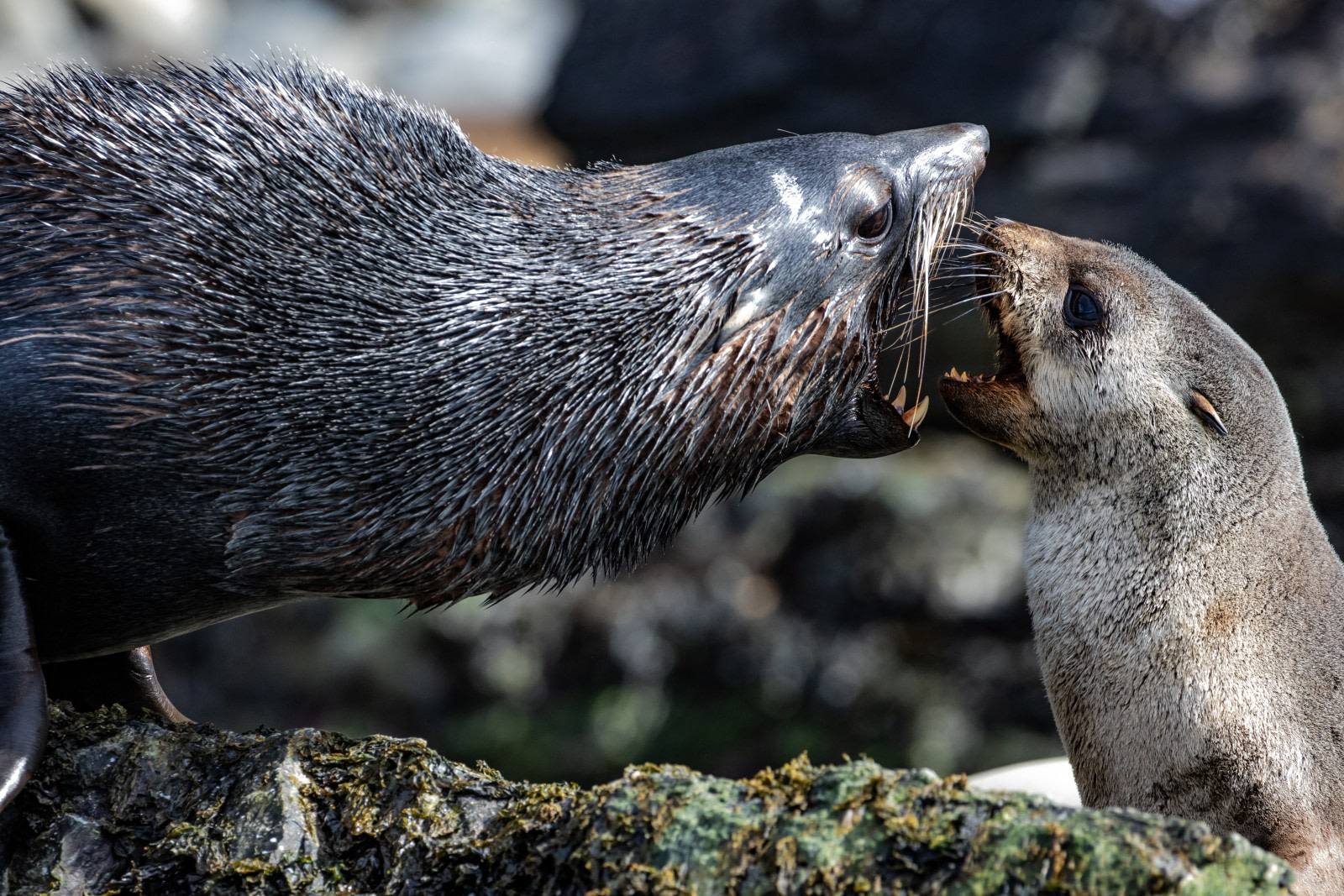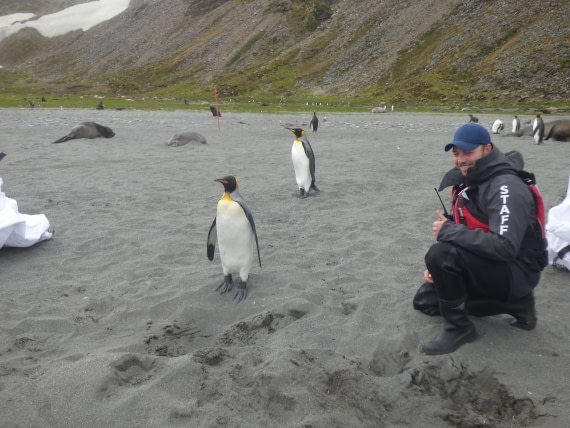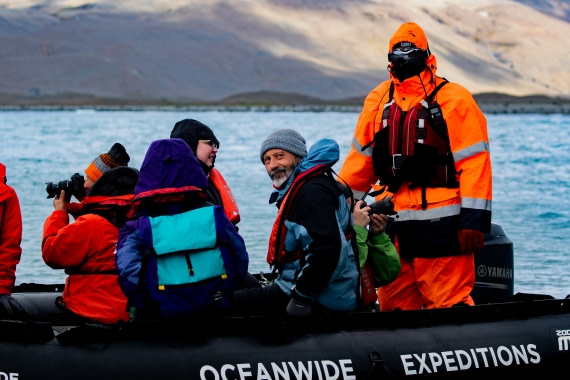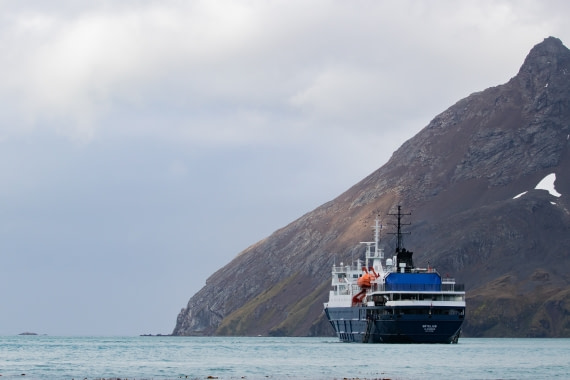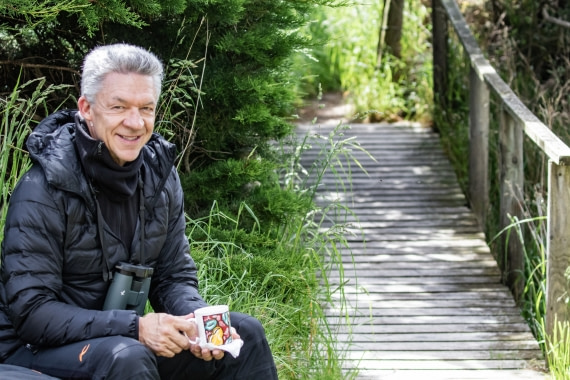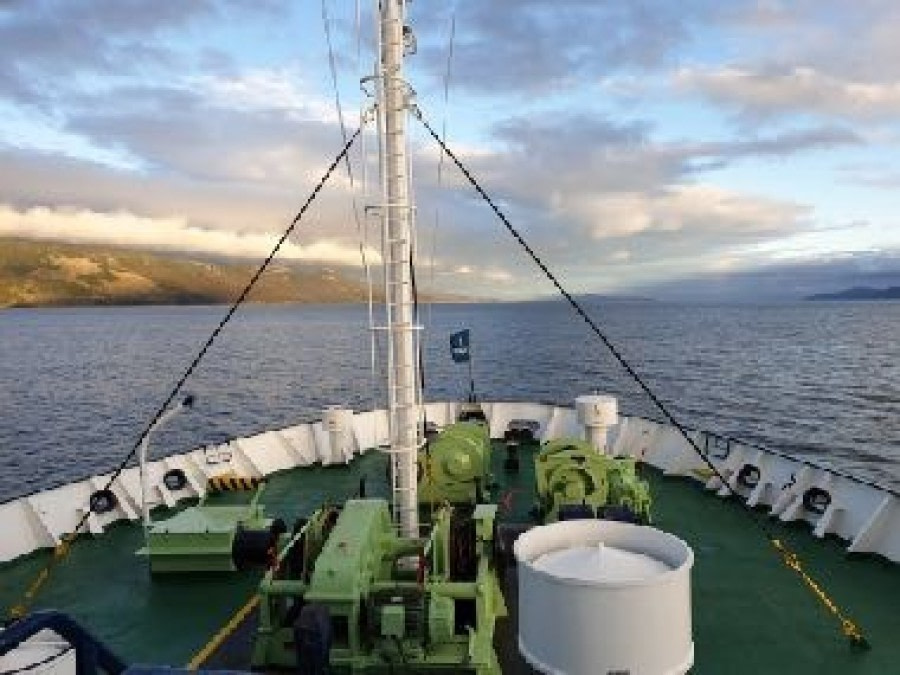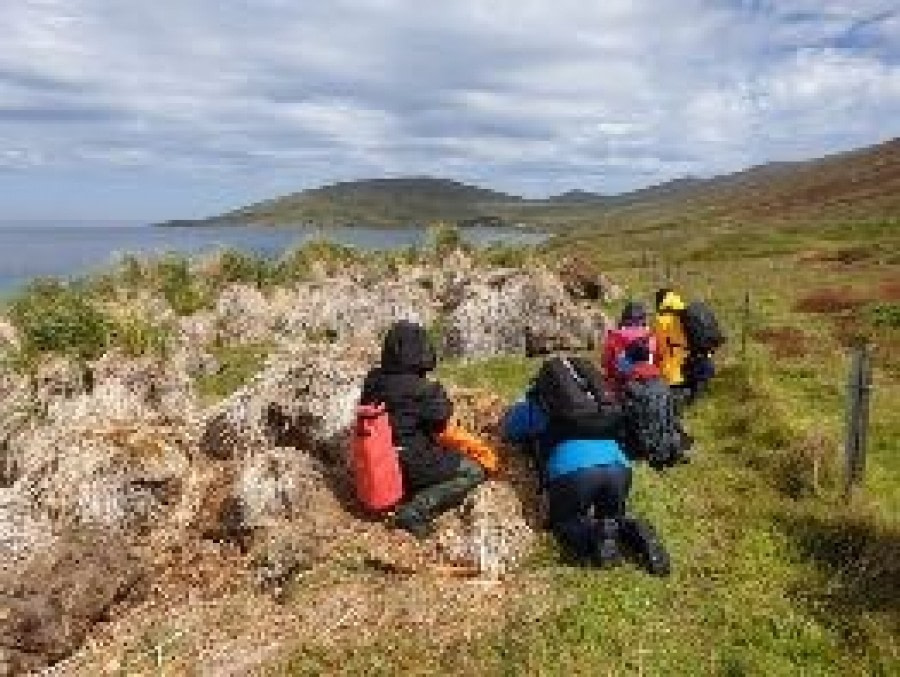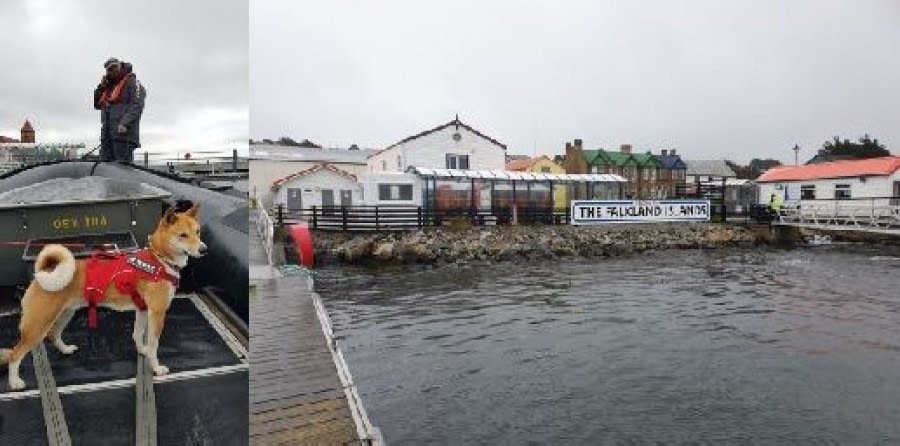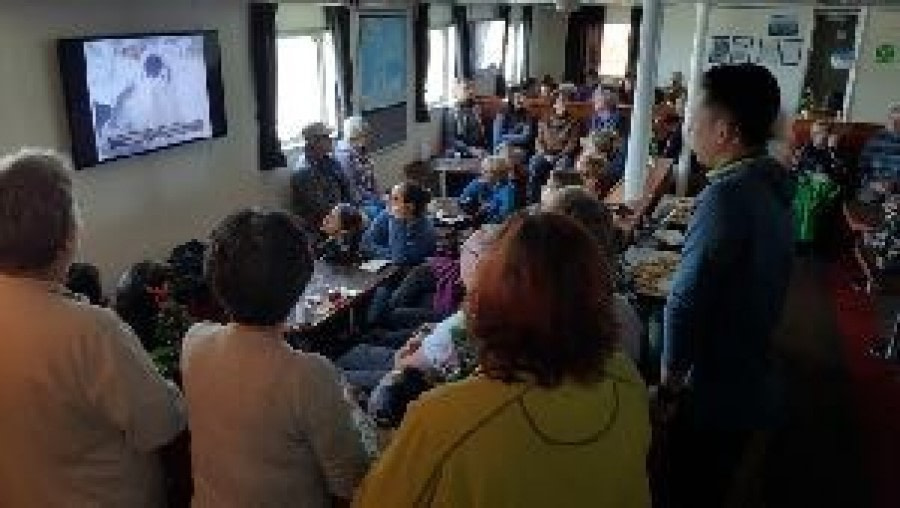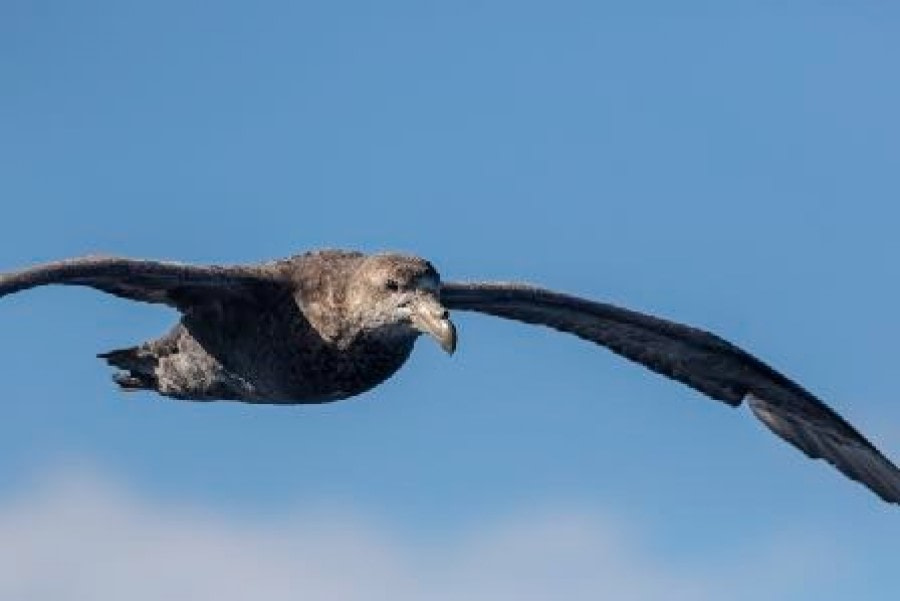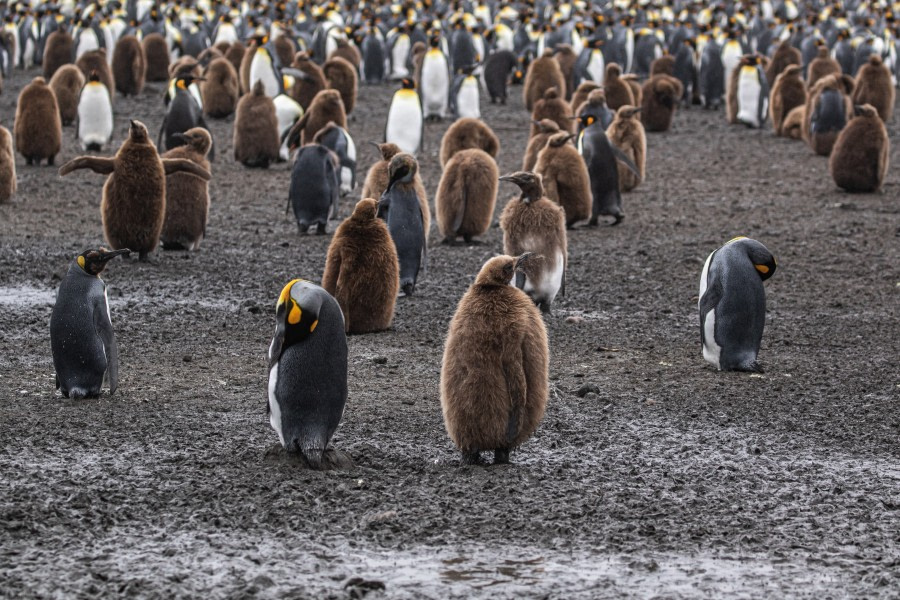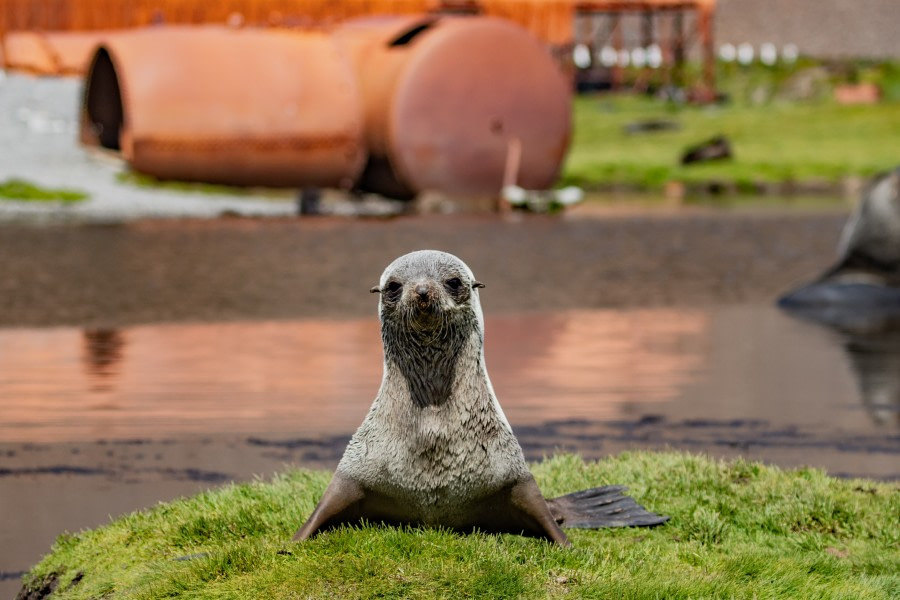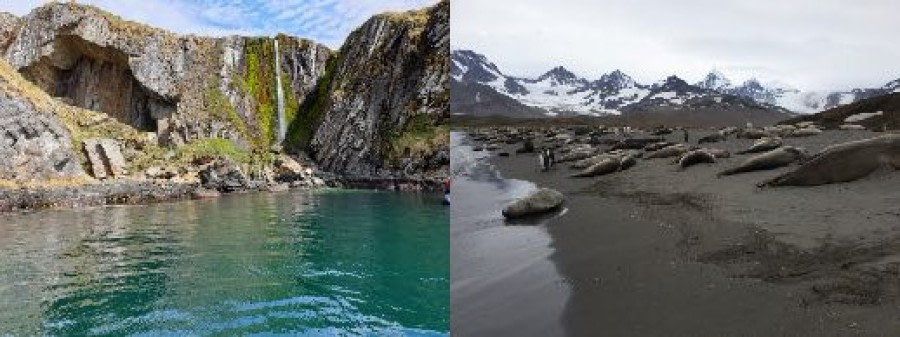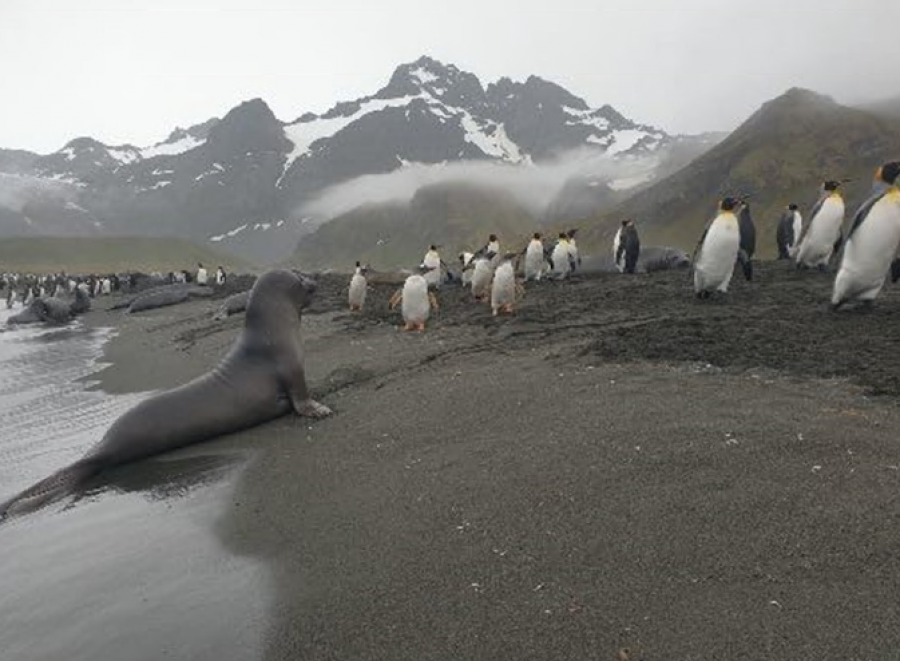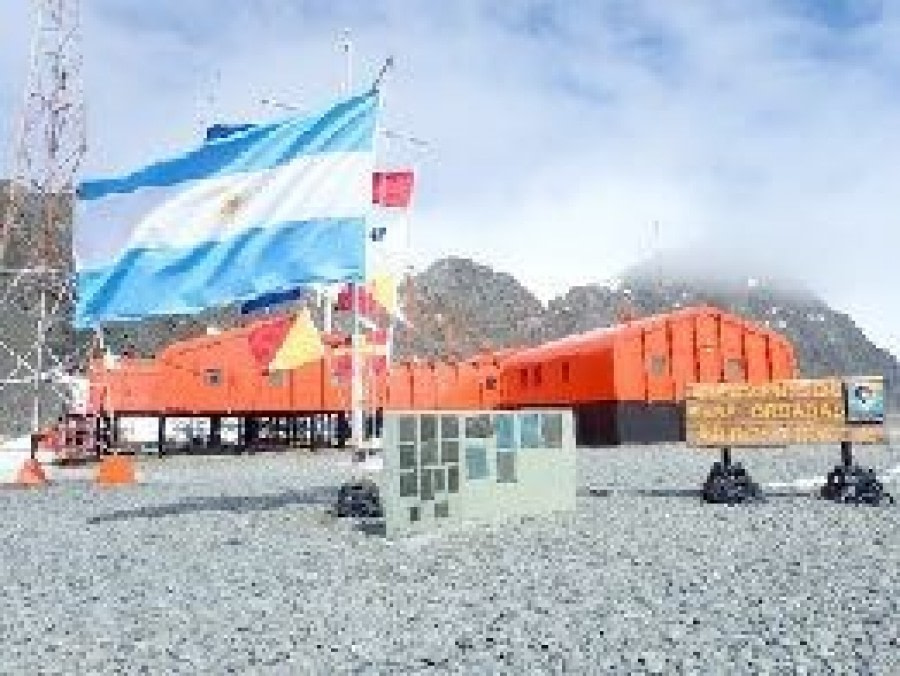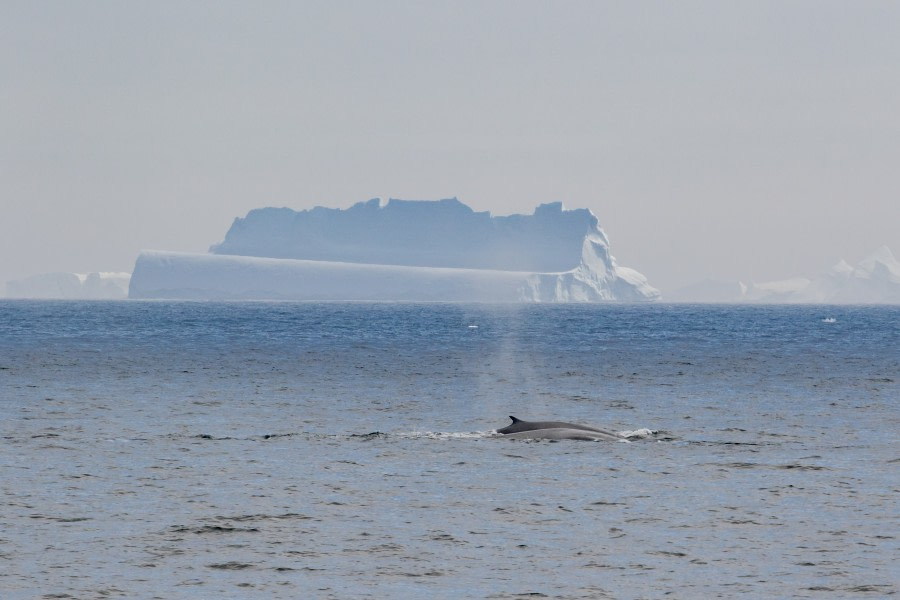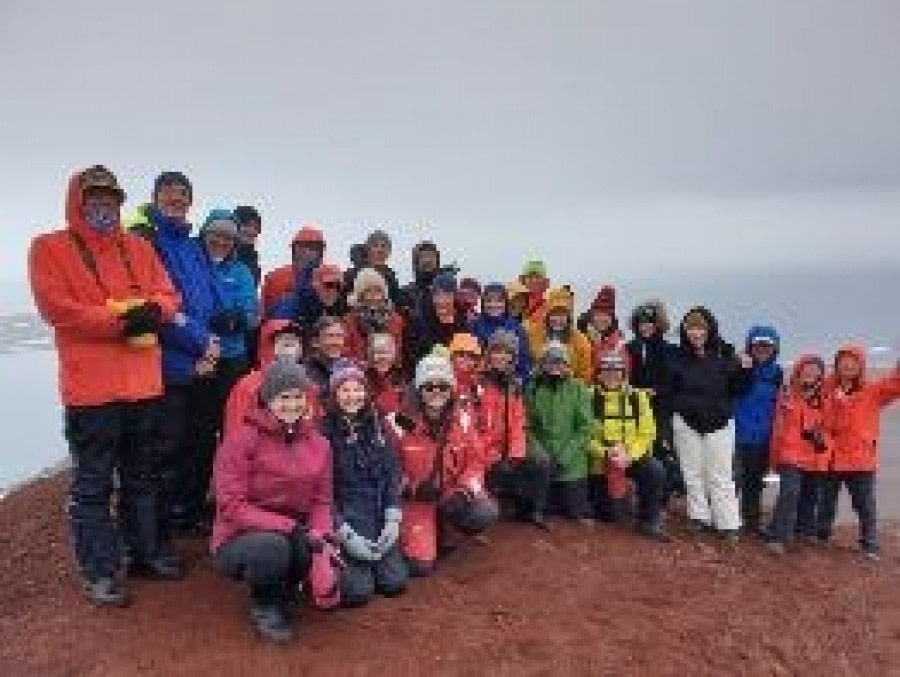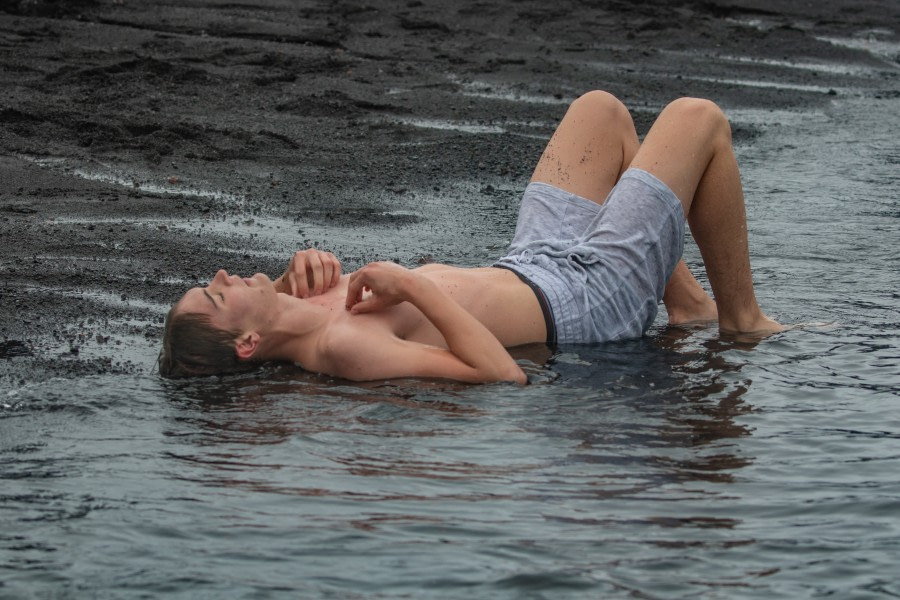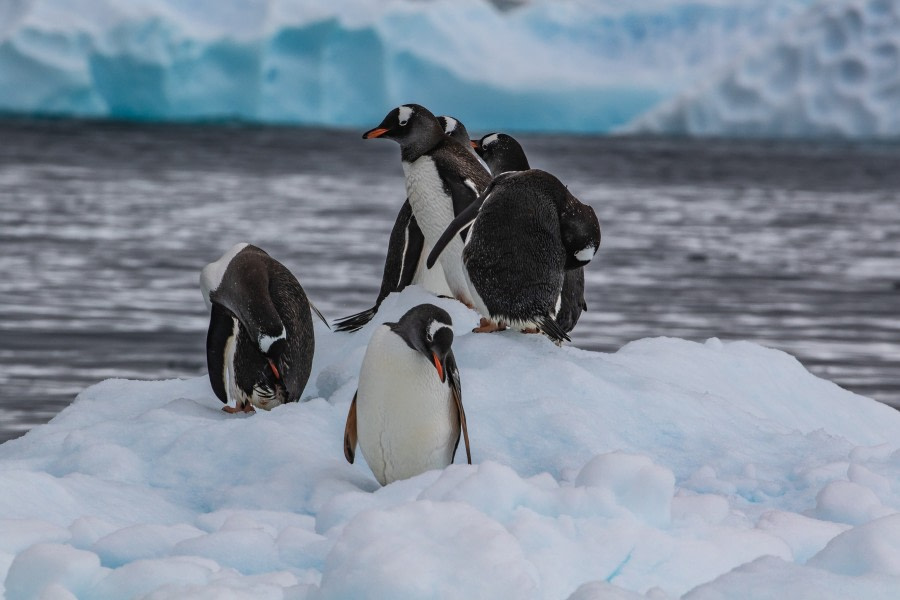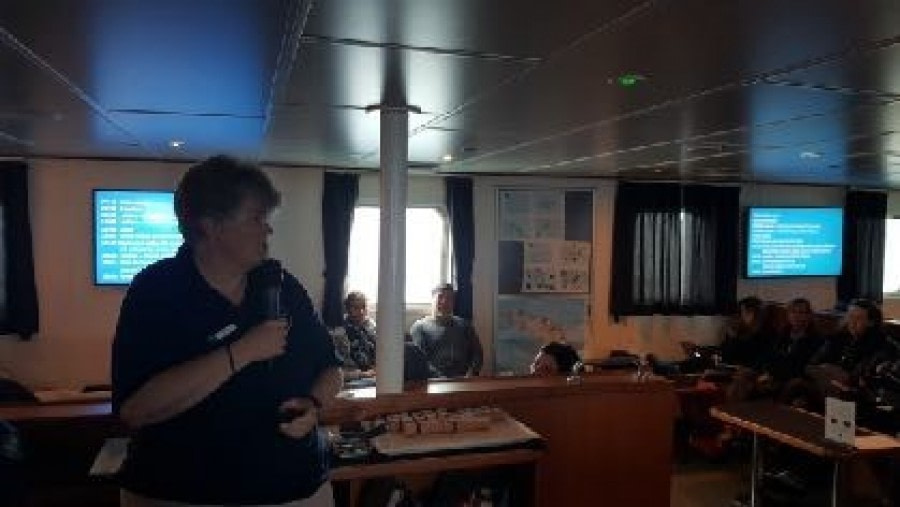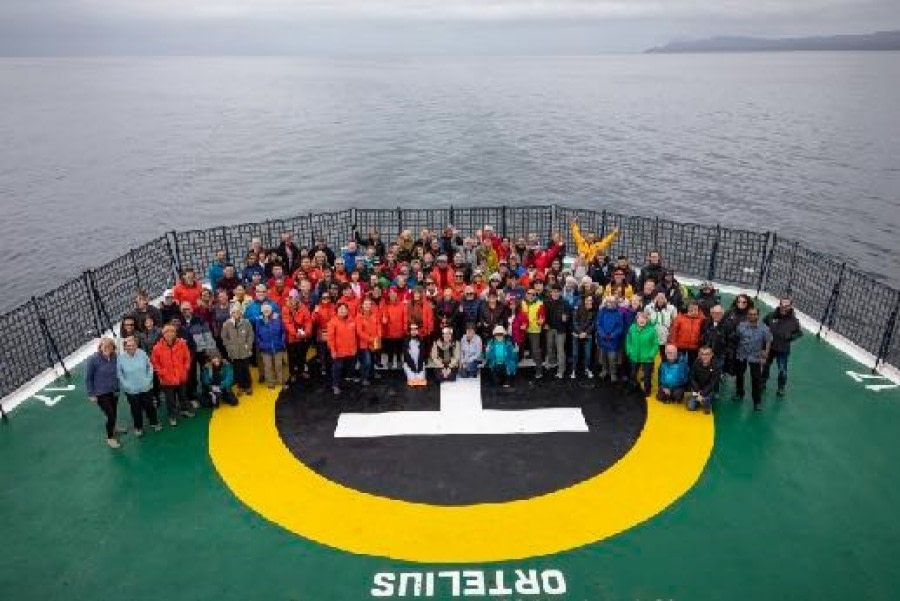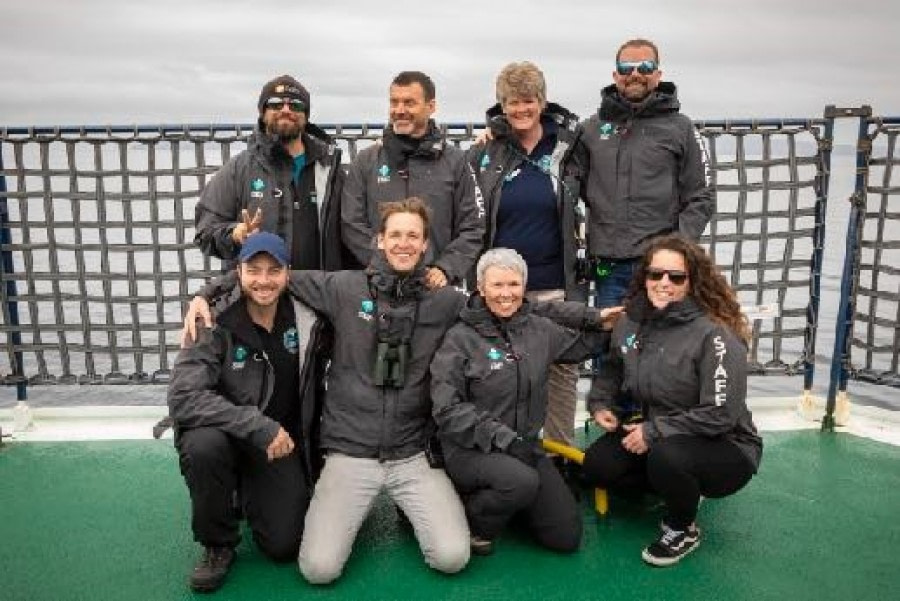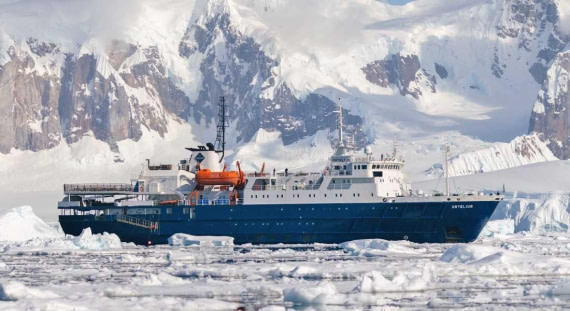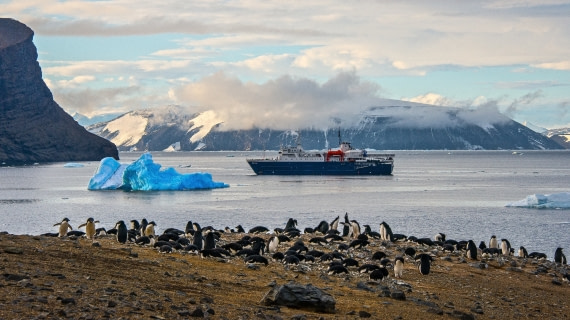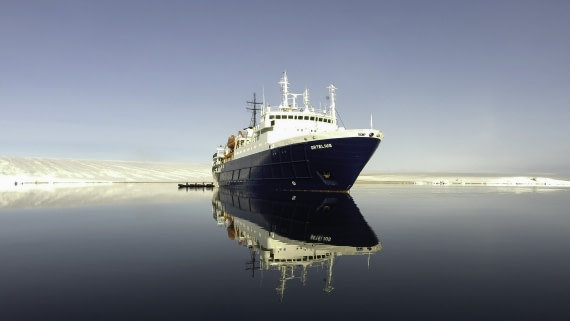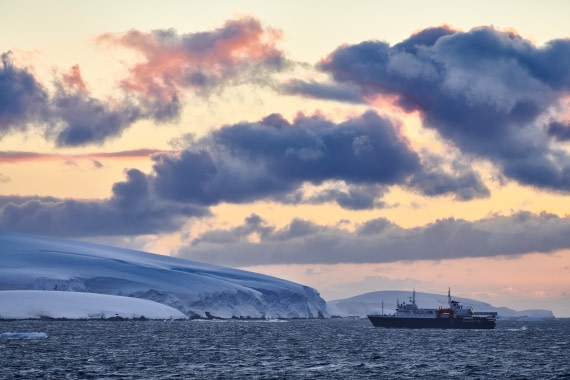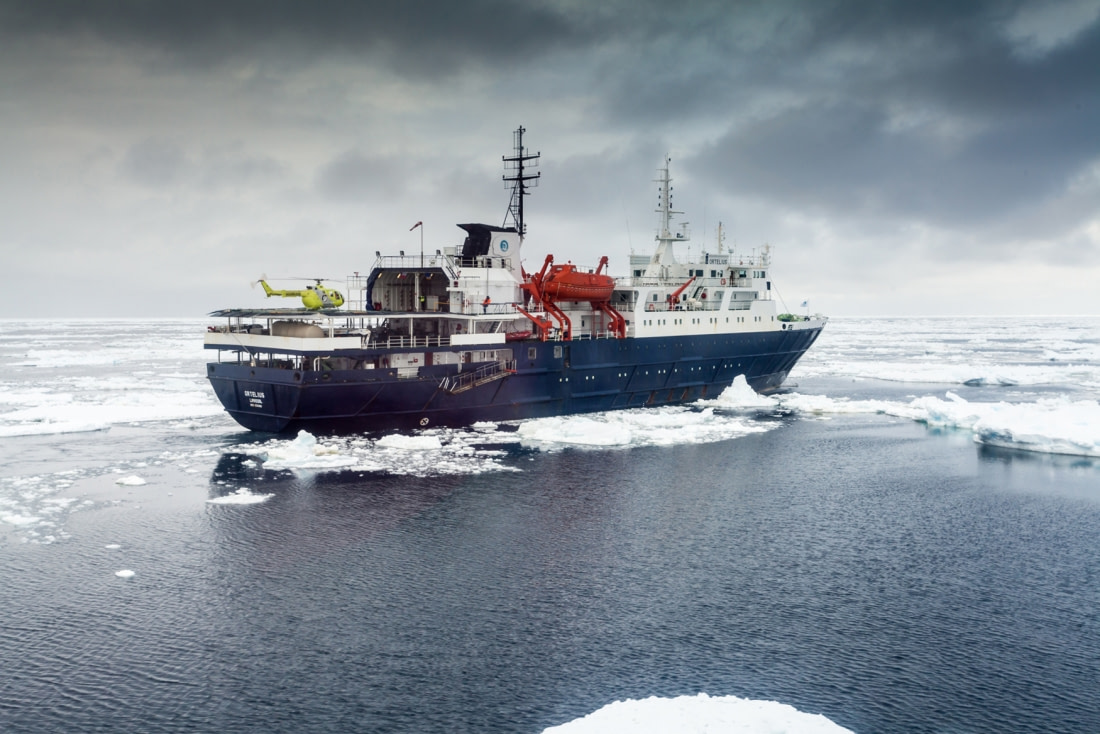| Datum: | 16.12.2019 |
| Position: | 54°54 ‘S, 067°57 ‘W |
| Wind: | SW 3 |
| Wetter: | Overcast |
| Lufttemperatur: | +12 |
It was late afternoon on a windy day in Ushuaia. The first passengers to arrive to Ortelius at 4pm were and all the expedition staff greeted the guests as they climbed the gangway for the first time and hotel manager Sigi quickly had all the guests assigned and shown to their cabins where they will be staying for our trip. After every passenger was onboard and had a cabin, we had our mandatory safety drill, everyone seemed to enjoy wearing orange! We soon left the pier hoping that the conditions co-operate for us to have this fantastic adventure. Before dinner all the guides introduced themselves and Claudia (Clouds), our EL gave us a little introduction about what we are hoping to do on our trip. Our ships doctor (Linda) had a ‘patch and pills party ’after dinner to try and keep everyone free from feeling too sea sick, the weather forecast looked stormy so hopefully not too many of us would feel motion sickness! After we left Ushuaia we heard that the wind conditions had worsened to the point that 3 other ships were locked in Ushuaia and could not leave the same day as we did. Our Captain definitely made the right call otherwise we would have lost a couple of days.
